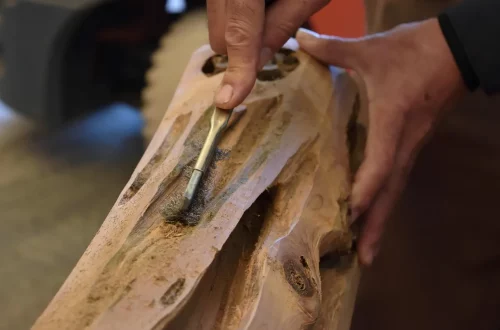
The Best Wigs for Small Heads: Finding Your Perfect Fit
Finding the right wig can be a transformative experience, especially for individuals with smaller head sizes. Many people are unaware that wigs are not one-size-fits-all; they come in a variety of sizes and styles, each designed to cater to different head shapes and dimensions. For those with petite features, selecting a wig that fits comfortably and looks natural can be particularly challenging. A poorly fitting wig can lead to discomfort, awkward styling, and a less-than-flattering appearance, which is why understanding how to choose the right option is crucial.
Wigs have become increasingly popular not just for those experiencing hair loss but also for anyone looking to change their look. From synthetic to human hair, the options are vast, and the right choice can enhance your personal style and boost your confidence. Additionally, the construction of the wig cap plays a significant role in achieving the perfect fit. For those with smaller heads, understanding the importance of cap size, materials, and styles can make all the difference in finding that ideal wig. As we delve into the world of wigs for small heads, we will explore various aspects that contribute to selecting the best option tailored just for you.
Understanding Wig Sizing and Cap Construction
When it comes to wigs, sizing is one of the most critical factors for ensuring a comfortable and secure fit. The majority of wigs are categorized into three main sizes: petite, average, and large. For those with smaller heads, the petite option is typically the best choice. However, it’s essential to note that not all wig brands use the same sizing standards, so it’s crucial to measure your head accurately before making a purchase.
To measure your head, use a soft measuring tape and note the circumference around your head, just above the ears and across the forehead. This measurement will help you identify what size wig will fit best. In addition to circumference, consider the width from ear to ear and the front to back measurements. These dimensions will give you a better understanding of how a wig will sit on your head and whether it will feel secure during wear.
Cap construction is another vital aspect to consider. Wigs can feature different types of caps, including lace fronts, monofilament caps, and traditional wefted caps. Lace front wigs are particularly popular for their natural hairline appearance, making them an excellent choice for those looking for a realistic look. Monofilament wigs offer a breathable option that allows for versatile styling, while traditional wefted caps are often more affordable and provide a comfortable fit.
For small heads, opting for wigs with adjustable straps or elastic bands can also be beneficial. These features allow for a more customized fit, ensuring that the wig stays in place without feeling too tight. Remember, comfort should be your top priority when selecting a wig. A well-fitting wig not only looks better but also feels better, allowing you to wear it confidently throughout the day.
Material Choices: Synthetic vs. Human Hair
When selecting a wig, one of the primary decisions you’ll face is whether to choose synthetic or human hair. Both materials have their unique advantages and disadvantages, and understanding these can help you make an informed choice.
Synthetic wigs are often more affordable and require less maintenance compared to human hair wigs. They come pre-styled, meaning you can wear them straight out of the box without the need for additional styling products or tools. This is particularly beneficial for those who may not have the time or expertise to style their hair daily. Moreover, synthetic wigs retain their shape even after washing, making them a practical choice for everyday wear.
On the other hand, human hair wigs offer unmatched versatility and a natural look. They can be styled, colored, and treated just like your own hair, making them ideal for individuals who want a more customized appearance. However, human hair wigs require more care and maintenance, including regular washing, conditioning, and styling. This can be time-consuming and may not suit everyone’s lifestyle.
For those with smaller heads, consider the density of the wig’s hair. Wigs with a lighter density can create a more natural appearance and prevent the wig from feeling overwhelming. Additionally, pay attention to the hair texture; options range from straight to wavy to curly. Choosing a texture that complements your natural hair can enhance the overall look and feel of the wig.
Ultimately, the decision between synthetic and human hair comes down to personal preference, budget, and lifestyle. Both options can work well for smaller head sizes, so take the time to weigh the benefits of each material before making your final decision.
Styles and Trends for Small Heads
The world of wigs is vast, with an array of styles that can cater to small head sizes. Understanding current trends and timeless styles can help you find a wig that not only fits well but also aligns with your personal aesthetic.
Short hairstyles are often the go-to option for those with smaller heads. Pixie cuts, bobs, and chin-length styles can create an elegant look while framing the face beautifully. These styles tend to add volume and can highlight your facial features, making them a flattering choice for many. Moreover, shorter wigs are generally lighter, which can enhance comfort throughout the day.
Long wigs can also work for smaller heads, but it’s essential to choose the right length and volume. Opting for layered styles rather than thick, straight hair can create a more balanced appearance. Layers add movement and dimension, helping to avoid the “wiggy” look that can happen with straight, heavy wigs.
Wavy and curly wigs are another fantastic option for those with petite features. These styles can add body and texture, which can be particularly flattering. However, when selecting curly wigs, be mindful of the curl pattern and volume to ensure it complements your head size.
Lastly, color trends can also play a significant role in your choice of wig. Natural shades, balayage highlights, and bold colors are all popular options. Choosing a color that complements your skin tone can enhance your overall appearance and help the wig blend seamlessly with your natural features.
In conclusion, finding the perfect wig for a small head involves consideration of size, material, and style. By taking the time to research and understand your options, you can select a wig that not only fits comfortably but also enhances your personal style and confidence.
—
**Disclaimer**: This article is not intended as medical advice. If you have health-related concerns, please consult a qualified healthcare professional.




